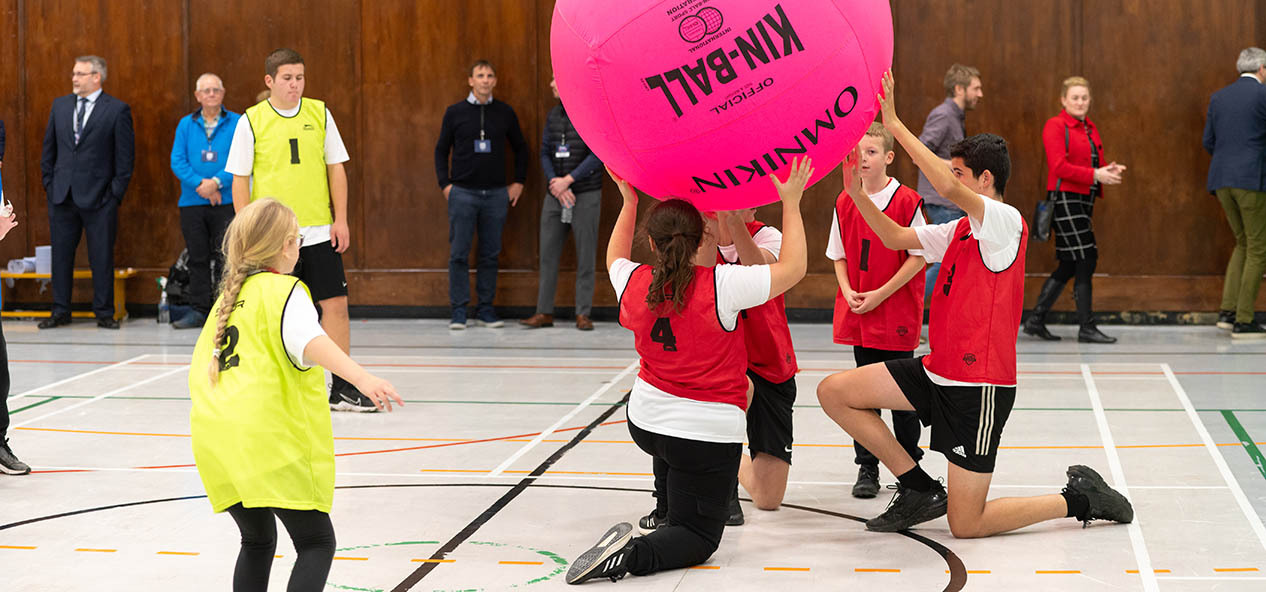Active Skills Hub Learning Portal
Strengthen your skills with flexible training provided in partnership with UK Coaching.

Sport England will level up access to physical activity by consciously investing £250 million into up to 100 places across England where inequality is greatest.
Sport England has announced a major and unprecedented expansion of its investment into local communities across England to ensure those in greatest need are able to play sport and be physically active. Active Partnerships, including Active Lincolnshire will play a crucial role in ensuring that this funding reaches those who have the greatest need to access sport and physical activity.
Research published by Sport England shows that the most active place in England has almost double the activity levels (81%) of the least active place (43%); lifespan could vary by nine years depending on where someone lives; and people living in some poorer neighbourhoods are twice as likely to have a disability or health condition.
To tackle this Sport England is expanding its Place Partners programme to see up to £190 million of National Lottery and Exchequer funding invested in up to 80-100 new places across England.
An additional £35 million
An additional £35 million will be invested to strengthen work with Sport England’s existing Place Partners; with up to £25 million being made available to create a Universal Offer for other parts of the country to help tackle inactivity and the associated inequalities that stop people moving more. This will include taking the learning and impact we have from existing places we are investing in to support others, and ensures that every area of England can access some support.
This new way of working – one of the biggest shake ups of sports funding in decades - directly supports the Government’s recent Get Active strategy which set ambitious targets of getting 2.5million more adults – with 1.4 million of these being from least affluent households - and 1 million children active by 2030 to tackle the disparities in activity levels across society.
Targeted local investment and resources
Targeted local investment and resources will help to increase activity levels, decrease inactivity and breakdown the barriers and inequalities that prevent people from playing sport or being active.
This Place-Based Systemic work will see Sport England partner with 80-100 new places through a network of existing 12 Place Partners and up to 43 Active Partnerships across England, to foster relationships with local organisations and leaders and overcome the specific barriers to physical activity that exist in their communities.
Invest in places
The programme will see Sport England invest in places using evidence-based strategies to ensure the greatest resource is targeted to the places with the highest inactivity levels and other social need indicators. Sport England will consider a range of data sources to do this, including analysis of physical activity data, from its Active Lives surveys; as well as social data, community need and health inequality data.
Since 2017, Sport England has tested this place-based approach of working with ‘Local Delivery Pilots’ in 12 of the country’s most disadvantaged and least active communities. This includes schemes such as Free Bikes in Birmingham, ‘Beating the Streets’ in Burnley through a partnership with Intelligent Health, getting school kids moving in Calderdale and rehabilitating patients in South Tees to improve their chances of recovery after surgery.
Combined with investment made through 43 Active Partnerships across England, Sport England has used funding to target systemic barriers to activity. Consequently, all places have benefited from increased activity amongst the people who are typically less active. These learnings and insights will now be applied as Sport England rolls out the additional funding over the next five years.
Sport Minister, Stuart Andrew MP said:
"Our new sports strategy sets out an ambitious aim to get 3.5 million more people active by 2030 and this £250 million investment from Sport England will help make that a reality.
"This targeted place-based funding gives greater access to quality activities and clubs for people of all ages in areas of the country that need it most.
"Keeping active is essential for our mental and physical health and wellbeing, so it is crucial we continue to break down barriers for people to stay fit and healthy.”
Tim Hollingsworth, Chief Executive at Sport England, said:
“Access to sport and physical activity in England is still not close to being a level playing field. Where a person lives and the environment around them has a huge impact on how likely they are to be physically active. Too often, people in low-income communities don’t have access to the same facilities or opportunities as wealthier areas.
“This is manifestly unfair – and must be addressed as a real priority. That is why our expanded Place Partnership programme will unashamedly see us target our resources and efforts on communities that need the greatest levels of support and experience the greatest levels of inequality. We will invest most in those that need it most so that everyone has an equal chance to access the very real benefits of playing sport and be physically active.”
Lisa Dodd-Mayne, Executive Director of Place at Sport England, said:
"This is an important moment in our delivery of Uniting the Movement, our long-term strategy which has tackling inequalities at its heart. We have shown through our local delivery pilots that this approach works. We will continue to work with local experts from a range of locally trusted organisations and partners in a bottom-up way to break down the barriers that prevent their community’s least active members from joining in. We want to ensure that a wide range of local spaces where people can be active – be it a facility, park or outdoor space – are the right spaces that meet the needs of the community.”